|
With new funding for Asian
languages, positive media coverage and supportive public attitudes,
this is a moment of renewed optimism for Japanese in Australian public
education.
Unlike 15 years ago, we see a normalised expectation
that Japanese will be taught, rather than the sense that its teaching
is a temporary response to the economic emergence of a great trading
economy, or a curious diversion. Japanese was the first ’truly
foreign’ language many Australians found a reason to learn and
came to esteem, and remains for growing numbers of Australians the
first foreign language and culture whose ‘difference’
from the western canon Australian society has felt positive messages
about.
These felicitous conditions have produced some good
outcomes, at least numerically speaking, including the strong numbers
studying Japanese at all education levels. Of the 1,401,550 students
at all school levels who, during 2006, enrolled in language study,
332,943 were taking Japanese (Lo Bianco, 2009, pp 40-52) Japanese
is also strong at tertiary level, being present in all states and
most institutions.
Australia’s independent national capability
in Japanese is perhaps our greatest achievement—the result of
public investment in knowing Japan and Japanese—and was generated
in a relatively short period, from when Japanese was first officially
designated a language of national importance in the National Policy
on Languages (Lo Bianco, 1987). That Japanese is now well embedded
in our education system represents a significant national cultural
achievement. The distinctively Australian character of Japan studies
also represents a platform for consolidating past success, and for
a leap of quality and some problem-solving activity.
Quality improvement and solving problems are key
for securing the future presence and benefits of Japanese teaching,
and are necessary because of considerable, occasionally acute, attrition.
To some extent attrition and quality are, perversely, indicators of
normalisation: for the first time we have many Australians with memories
of having tried but ‘failed Japanese’. We could attribute
this to having too many unsupported, low-commitment, improvised, non-articulated
and discontinued programs—but this holds for all languages to
some degree. Blaming systems isn’t good enough.
An under-appreciated factor is the discursive (and
corrosive) effects of failure, especially its impact on future expectations
of what is possible. What failed learners say to themselves, their
children, neighbours and friends is a material factor influencing
language education policy.
|
Dim but powerful
memories of poor outcomes are partly the legacy of the domination
of language debates by voices distant from schooling. These voices
sometimes disparage schools and teaching and interpret the national
interest with insufficient regard for what is realistically practical
for the range of Asian and European languages we need to teach, for
student and community interest in particular languages and for the
scope and diversity of motivations for language study.
This is evident in the continual recourse to Year
12 enrolments, results and languages studied, compared with four decades
ago. Media reporting and public debate often take Year 12 as a proxy
for the entire education effort in languages, and because it looks
poor this brings the entire activity into disrepute.
In 2006, only 10.3 per cent of students (see also
Lo Bianco, 2009: p. 49) completed schooling with a language, compared
to 44 per cent in 1968. Our focus should be on the 90 per cent of
students who fail to complete schooling with a language, rather than
on the choices made by those who persist, and whether these are the
‘wrong’ or ‘bad’ choices.
What are the prospects for Japanese? Effective language-education
policy must be premised on long-term planning, on living beyond the
time of the champions and on cumulative effort backed by a widely-based
remit. Now is indeed the moment to think of a long-term legitimation
and related strategy for Japanese, building on the stimulus of the
national curriculum, the normalisation of its teaching, and addressing
problems. This should be informed by the voices of the learners—bottom-up
messages perhaps serving to ‘make real’ the top-down proclamations.
A series of ethnographic studies undertaken from
2005 to 2008 in Melbourne primary and secondary schools offering Italian
and Japanese showed that students were both interested and aware of
what constitutes an academically serious program and were often sceptical,
even cynical, about system and school commitment. The level of commitment
to Japanese varied according to perceived sense of progress and judgments
about school seriousness. Many committed students insist on streamed
classes and the removal of the uninterested and the disruptive, while
marginal students closely evaluate options according to likely ‘pay
off’ (exam results, prospects for proficiency, workload, etc).
Many in both groups were critical of perceived superficial commitment
from ‘the system’, one declaring: ‘you know [there’s]…lots
of pretending going on…’
|
Three recurring
discourses—provisionally called Let’s Use It, Fix the
Teaching and No Compulsion—were found among the students. Under
the first, students are calling for much more active use of Japanese,
streaming of participants into ability groupings, and overhaul of
its teaching as a condition of their continuation. The second discourse
was focused only on pedagogical innovation, with differing levels
of intensity between waverers and the committed. The third gravitates
around the idea of streaming, a cry of frustration from the committed
and a call for action from waverers.
It is important to respond to student experience,
especially since students are calling for more seriousness of purpose.
But we also need more strategic thinking to position Japanese as ‘already
successful’ and no longer ‘experimental’ to influence
program design along the lines of content-based innovations emerging
in some successful European language-teaching methods.
Furthermore, we need more systematic exploration
of syllabus and examination reform to recognise the distinctive needs
of heritage learners and new learners, and to ‘surrender value
certification’ accepting high attrition rates. And we need to
explore ways to describe and record what learners have gained, and
replace any sense of failure with a record of achievement, hoping
that this serves as an incentive for later return to study Japanese.
Mostly, the goal is to ensure waverers become committed
to stay, and that the committed are rewarded for their efforts, to
greatly reduce loss of numbers from initial enrolment to exam presentation.
References:
-
Lo Bianco, J (1987), National Policy on Languages,
Canberra: AGPS.
-
Lo Bianco, J (2003), Language Education in Australia:
Italian and Japanese as Symbols of Culture Policy, pp 171-188,
in World Yearbook of Education 2003, edited by J Bourne and E
Reid, London, Kogan Page.
-
-
Lo Bianco, J (2009), Second Languages and Australian
Schooling. AER 54, Camberwell: ACER.
|


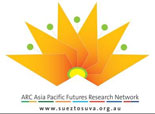
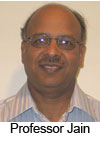
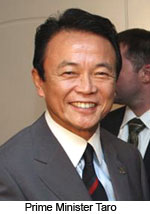 Since
Koizumi’s departure from office in 2006, a new prime minister
has taken the national helm each year. The three successors, including
current party leader and prime minister Taro Aso, could not arrest
declining support for the LDP, despite pouring billions of dollars
into the economy through stimulus packages.
Since
Koizumi’s departure from office in 2006, a new prime minister
has taken the national helm each year. The three successors, including
current party leader and prime minister Taro Aso, could not arrest
declining support for the LDP, despite pouring billions of dollars
into the economy through stimulus packages. 
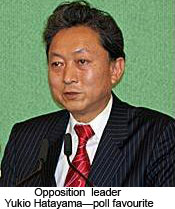 One thing, however, is certain: Japanese politics is poised for transformation
through the 2009 national election. Whatever the outcome, it will
make a landmark year in Japanese politics and a more lively and interesting
political landscape.
One thing, however, is certain: Japanese politics is poised for transformation
through the 2009 national election. Whatever the outcome, it will
make a landmark year in Japanese politics and a more lively and interesting
political landscape.
 A
statement from Wang Lequan, the CCP’s First Secretary in Xinjiang,
in justifying the state’s emphasis on the use of Mandarin, for
example, highlights this. He suggested that ‘the languages of
the ethnic minorities have very small capacities and do not contain
many of the expressions in modern science and technology, which makes
education in these concepts impossible. This is out of step with the
21st century’.
A
statement from Wang Lequan, the CCP’s First Secretary in Xinjiang,
in justifying the state’s emphasis on the use of Mandarin, for
example, highlights this. He suggested that ‘the languages of
the ethnic minorities have very small capacities and do not contain
many of the expressions in modern science and technology, which makes
education in these concepts impossible. This is out of step with the
21st century’. 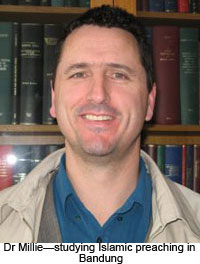
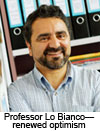
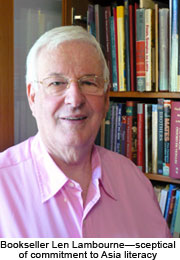 You
seem to have come to selling Asian books by a roundabout route.
You
seem to have come to selling Asian books by a roundabout route. 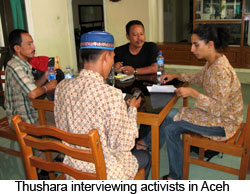 A
number of attempts had been made to broker peace in the province, but
it was not until 2005 that any of these attempts met with long-lasting
success. In August 2005, six months after the tsunami that killed close
to 200,000 people in Aceh, the Government of Indonesia and GAM signed
a Memorandum of Understanding. Among other things this agreement opened
up the opportunity for the international organisations that had been
working on post-tsunami reconstruction to begin to openly engage in
post-conflict work.
A
number of attempts had been made to broker peace in the province, but
it was not until 2005 that any of these attempts met with long-lasting
success. In August 2005, six months after the tsunami that killed close
to 200,000 people in Aceh, the Government of Indonesia and GAM signed
a Memorandum of Understanding. Among other things this agreement opened
up the opportunity for the international organisations that had been
working on post-tsunami reconstruction to begin to openly engage in
post-conflict work.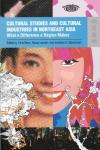 Cultural
Studies and Cultural Industries in Northeast Asia. What a Difference
a Region Makes
Cultural
Studies and Cultural Industries in Northeast Asia. What a Difference
a Region Makes  Confucius
from the Heart. Ancient Wisdom for Today's World
Confucius
from the Heart. Ancient Wisdom for Today's World  Samurai
Kids. Monkey Fist. Book 4
Samurai
Kids. Monkey Fist. Book 4  Politics
of the Periphery in Indonesia. Social and Geographical Perspectives
Politics
of the Periphery in Indonesia. Social and Geographical Perspectives
 Philippine
Gay Culture. Binabae to Bakla, Silahis to MSM
Philippine
Gay Culture. Binabae to Bakla, Silahis to MSM Red
vs Yellow. Volume 1. Thailand's Crisis of Identity
Red
vs Yellow. Volume 1. Thailand's Crisis of Identity